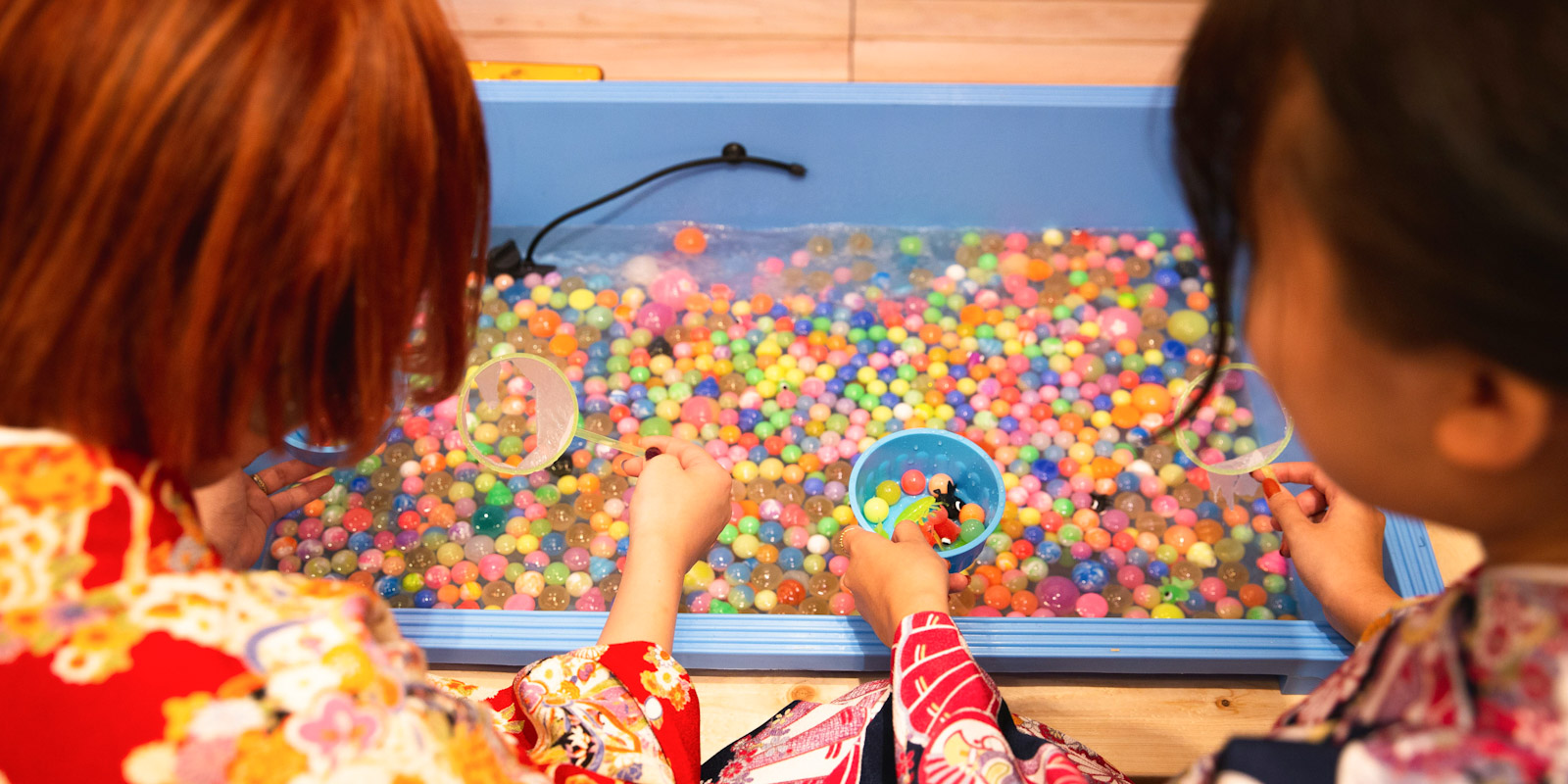
Threading is a widespread learning experience in early childhood education. Handling beads and buttons, promotes fine motor and hand-eye coordination skills.
Toddlers can be introduced to large wooden beads. Preschoolers can manipulate tiny objects and try activities like sewing.
Children also benefit from playing with beads and buttons as open-ended materials. Place some inside a metal container and shake, shake, shake!
Water beads may not be useful for threading, but they are super-duper biodegradable fun!
Types of beads and buttons
Beads and buttons can be made from a wide variety of materials, which makes them so interesting. They make amazing loose parts. Children love to inspect the intricate details of buttons and beads made from various materials.
Glass, wood, plastic, metal, ceramic, stone, paper, clay, crystal.
Some of these materials allow children to make their own beads and buttons. Try wrapping a strip of glued paper around a pencil, or pressing holes into balls of clay.
There are also water beads, which offer children a rich sensory experience.
Children can thread with other objects too.
Cereal loops, felt and fabric shapes, paper cutouts, pasta shapes, wooden spools.
EYLF learning outcomes
The Early Years Learning Framework asks children to take increasing responsibility for their own physical learning (3.2), which includes the fine motor skills required for threading and picking up beads and buttons.
Threading connects children with natural and processed materials (4.4), like wood, paper, plastic and textiles.
While threading, children develop learning dispositions such as confidence, commitment, creativity, enthusiasm and persistence (4.1), and skills like problem-solving, experimentation and hypothesising (4.2).
Children may transfer and adapt what they have learned from one threading activity to another (4.3), but also between unrelated activities like threading and pencil holding.
Beads and buttons come in a variety of colours, shapes and sizes. They can be arranged systematically so they are excellent tools for teaching children how pattern systems work (5.4).
Learning experiences
Make things with beads and buttons
Buttons and beads are used in fashion and handicrafts by various cultures around the world. Inspire children with pictures and encourage them to make their own items. Children can make:
- bracelets and necklaces
- bead curtains
- keychains
- decorative ornaments
- beaded animals
- and friendship bracelets.
Show your children beautiful photographs of beading artist Camille Laddawan in her studio using a loom. While this technique may be too advanced for the early childhood years (and for many adults), your children will benefit from learning about the processes of craftsmanship.
Play with maths
These loose parts are also great for maths play. Sort beads or buttons by:
Practice counting and group them in sets of two, five or ten. Arrange them in patterns and use them as counters for homemade board games.
Experiment with buttons
Encourage children to manipulate buttons and similar fasteners, like press studs and toggles. Children can observe how they attach to different fabrics (e.g. by thread) and investigate how they can be used to fasten two pieces of fabric.
Children can experiment with buttons in other ways. They can mix buttons with paint for stamping or test how different materials react to buttons being pressed into them (e.g. playdough).
Teach children to sew
Sewing may be considered as a form of risky play. However, it is possible for young children to work with needles, just like they can with hammers and nails. Early childhood educators can conduct a risk assessment and start with safe and simple activities that use:
- blunt needles
- sticky tape wrapped around the end of string or thread
- lacing cards with pre-punched holes
- or sewing cards that teach stitching patterns.
